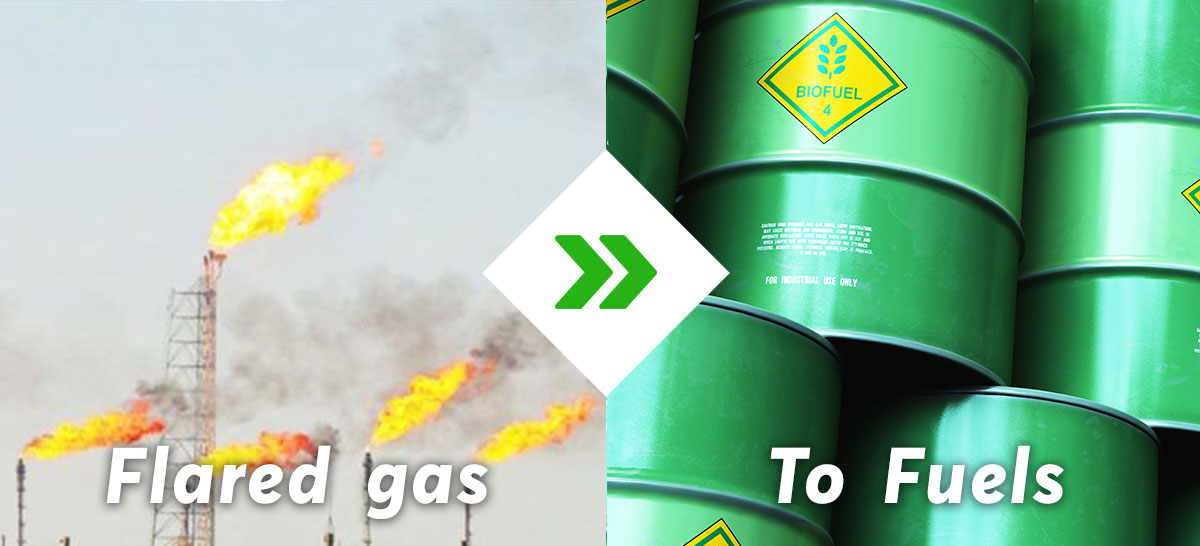Gas to fuels
There are already some very large GTL plants, but most of them use natural gas, which is converted directly into fuel on site. The large quantities of associated gases are mainly only flared, which is now to be ended with our plants.
Efficiency is not a criterion here, since "waste" is used.
The first step is always the conversion of the associated gases into syngas, i.e. a mixture of carbon monoxide (CO) and hydrogen (H2).
This syngas is then taken to a Fischer-Tropsch reactor to make hydrocarbon chains, i.e. fuel. The usual Fischer-Tropsch synthesis then leads to gas, petrol, diesel and kerosene.
The efficiency of existing plants is a little over 50%.
Our Ecogy-GTL is now the most modern and efficient process available in the world, and it is available as a single, compact and standardized unit, housed in two 53ft and four 20ft containers.

The efficiency is close to 100%, so that not only associated gases can be used, but also pure natural gases, as their conversion into fuel is always far more profitable than selling as natural gas.
In addition, we have developed a very special Fisher-Tropsch catalyst which has a very narrow distribution curve, so that when set to diesel, the entire output can be used as diesel without further treatment.
We also have distilled water as a by-product.
Each of the plants can convert 1 ton of methane per hour, which corresponds to 1,522 cubic meters. This then becomes approx. 1,150 liters of diesel and approx. 600 liters of water. We have 8,000 operating hours per year.
Of course, other fuels can also be produced, such as gasoline or kerosene, but these are always mixtures that must be separated downstream.
Despite all these excellent properties, the system is absolutely emission-free and largely energy self-sufficient.
Finally, an important note: Because of the positive CO2 balance of the products from associated gases, they are to be classified as bio-fuels.






